The dying American Mall has become an all too familiar theme in retail real estate for the past decade. Department store closures and abandoned suburban malls have become synonymous with Class B shopping centers. Out of the approximate 1,200 indoor malls in America, about 400 (or one third) are dying or already dead. What is happening to these vast swaths of underused spaces? Several trends observed in redevelopment and reuse of struggling malls may provide more encouraging answers.
While turning large sections of malls or former anchor department stores into entertainment centers is a current trend, developers in different parts of the country are finding other creative transformations as well. These include residential, medical, and even religious reuses.
Redeveloping distressed malls into residential units has been particularly rewarding in dense urban centers. Residential communities in malls that were built in central locations have become increasingly attractive to the urbanizing young professional workforce. For example, America’s first indoor mall (a National Historic Landmark) built in 1828 in Providence, RI closed in 2008 after years of dwindling shoppers and an exodus of retail tenants. After two years and $10 million in renovations, the old Westminster Arcade was relaunched in 2014 as the Arcade Providence, a community of 48 micro-lofts with boutique stores and restaurants on the first floor. These units range mostly from 225 to 450 square feet. The micro-lofts were welcomed by many young professionals struggling to find affordable places to live in Providence where like many cities across America, rent was becoming a prohibitive cost to remaining city center. As of 2016, rent has increased from $550 per month for a 225 square foot unit to $800 per month since 2014. Despite the significant rent increase, there are still over 4,000 people on the waiting list. On a monthly Rent Per Square Foot (RPSF) basis, the Arcade at $3.56 RPSF is almost two and a half times higher than the average RPSF in Providence.
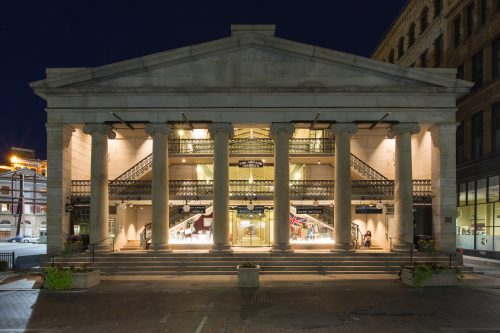
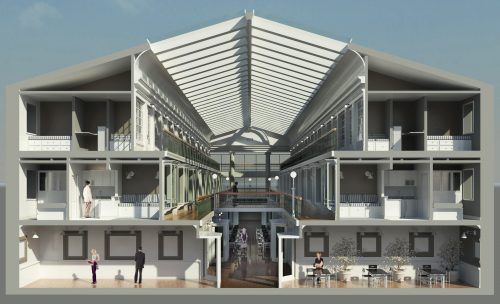
The Arcade at Providence. (Photo Credit: Ben Jacobsen/Northeast Collaborative Architects)
Medical centers have also become a growing trend in the revitalization of underutilized shopping centers. Developers have found reuses for troubled malls in suburban America taking advantage of convenient access to major streets and parking availability for customers that were inherently built into mall designs. Large medical institutions in cities are finding new ways to transfer and expand certain departments and clinics to suburban areas helping to alleviate traffic density and parking shortages easing complaints from patients that require frequent scheduled treatment.
In Nashville, TN, the second floor of ailing One Hundred Oaks Mall was transformed into a medical center for Vanderbilt Health utilizing 450,000 square feet of the mall’s 850,000 square foot space. The location about eight miles from downtown is easily accessible by both city and suburban residents. It houses various clinics and departments such as a center for heart disease prevention, and pediatrics. Patients can move throughout the center or even shop while waiting. Other medical companies have followed suit in the past years such as DaVita Healthcare Partners, one of the nation’s largest kidney care providers based in Denver, Co. De Vita continues to open about 100 to 150 centers a year, many of which are in retail centers. The trend from retail to medical reuse is one that will continue to grow as the medical industry’s increased demand for space meets the overabundance in supply of brick and mortar stores.
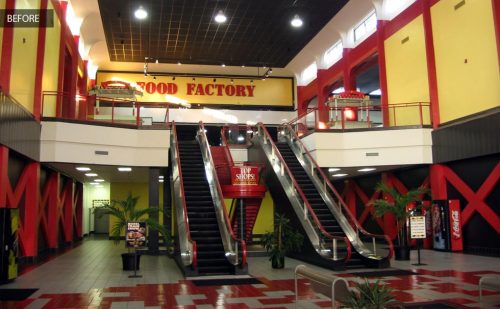
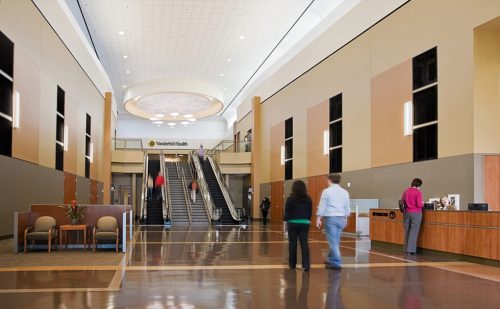
One Hundred Oaks Mall main entrance before and after. (Photo Credit: Gresham Smith and Partners)
In some parts of the country, churches have also found new homes in desolate malls. Churches however, typically do not make up the entirety of most struggling shopping centers, but rather provide a temporary buffer between closure or reuse. Nevertheless, mall churches appear to be a trend for the time being. The Euclid Square Mall in Euclid, OH was often featured as an example of dying malls across America, but received temporary relief over the years and currently hosts 24 different churches within its former retail spaces.
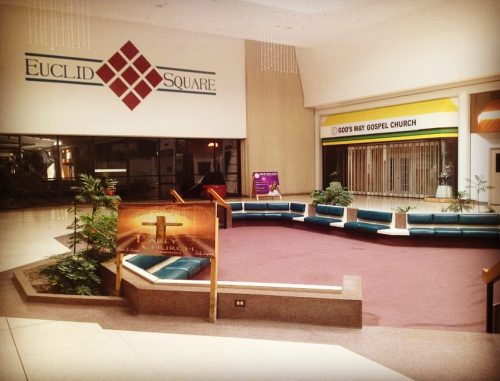
Euclid Square Mall. (Photo Credit: K. Bhatia)
Some churches with large congregations on the other hand, have purchased entire malls, such as the aptly named Church at the Mall in Lakeland, Florida, which converted the former 400,000 square foot Lakeland Mall into worship facilities and community centers. Megachurches, many with congregations of over 10,000 people have found renovating dead malls to be more cost effective than building an entire new facility.
While many suburban and Class B malls may continue to decline in America, opportunities for redevelopment of these retail spaces are attracting more creativity and attentiveness to different growing needs of local communities. Developers and organizations of successful mall reuse projects have been able to utilize various advantage factors such as central location, ease in accessibility, and existing design. The scope and variety of these adaptive reuse trends point to a larger pattern in consumer behavior. Much like today’s shopper who demands more personalized services and experiences from retailers, many of the failing malls across America are undergoing the transformations necessary to become more useful to the particular needs of its surrounding community.
